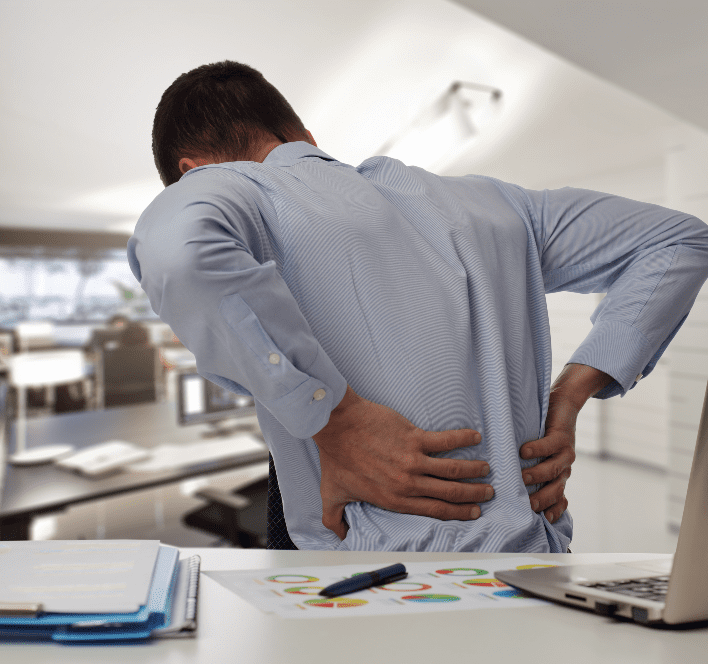Everyone, regardless of age, can develop a herniated or bulging disc. That’s because our spine supports every movement we make. As we age, so do the discs that cushion our spine. While herniated and bulging discs can be treated and controlled, many people are unaware of why they’re in pain, causing them to try and “stick it out.”
If you’re tired of living in pain, watch out for the following three warning signs. These may indicate a herniated or bulging disc, or even a more severe spinal disorder.
Pain When You’re Sitting Down
Many people think that sitting removes pressure from the spine. However, sitting is known to exert extreme levels of compression on the spine, and when you sit for prolonged periods, it can lead to the degeneration of discs. If you were already diagnosed with a herniated or bulging disc, sitting can further the protrusion of your discs, resulting in crippling neck and back pain.
If you have a sedentary job that requires you to sit for long hours, your muscles may weaken, causing your posture to slowly deteriorate. Poor posture such as slouching puts excessive strain on the discs, which dries, shrinks, and flattens them out. When discs are damaged, you may experience disabling pain.
Pain in Your Sciatic Nerve
Herniated and bulging discs are more common in the lumbar spine—the lower back. Disc protrusion in the lower lumbar region is one of the main causes of sciatic nerve pain. Your sciatic nerve runs from your lower back through your buttocks and legs, and when your discs protrude and irritate your sciatic nerve roots, you can experience sharp pain down your legs.
Both mechanical and chemical factors cause pain from disc herniation or bulging. When a bulging disc presses on a spinal nerve root, it compresses and impinges the nerve. When a disc ruptures, it releases the inner nucleus into the spinal column, releasing chemicals that produce inflammation near the sciatic nerve.
Pain Intensifies Doing Certain Activities
Most people recognize that trauma-related injuries or aging can lead to back and neck pain, but what happens when you have pain that appears out of nowhere? Are there activities that you do daily that aggravate your spine? The answer is yes. Every movement or non-movement you make has the potential to compromise your spine. You may have a herniated or bulging disc if your pain worsens with certain activities, including:
- Sneezing
- Coughing
- Stretching or exercising
- Bending down
- Carrying or lifting heavy objects
- Driving
- Sleeping
Millions of Americans experience back pain, and the cause can be challenging to diagnose. Although it’s tempting to want to rest or avoid dealing with your pain, it’s imperative that you see a doctor when your pain is persistent.
Award-Winning Medical Team Caring for You
If you or someone you love is showing any of these signs, reach out to a medical professional for a proper diagnosis and treatment plan. Even if you think you just have a mild backache, it’s better to be safe than sorry when it comes to your spine health. Spinal disorders can be life-altering, prohibiting you from being able to enjoy even the simplest of activities. Don’t wait to receive efficient and exceptional care from the award-winning medical team at NJ Spine & Orthopedic.
At NJ Spine & Orthopedic, our medical group has locations throughout Florida, New Jersey, New York, and Pennsylvania. Comprehensive and state-of-the-art care is never too far away. From pain management to the most technologically advanced minimally invasive treatments, our team of spine specialists strives to improve the lives of those suffering from pain. Call (866) 272-9271 or complete our contact form to speak with a board-certified doctor today.

